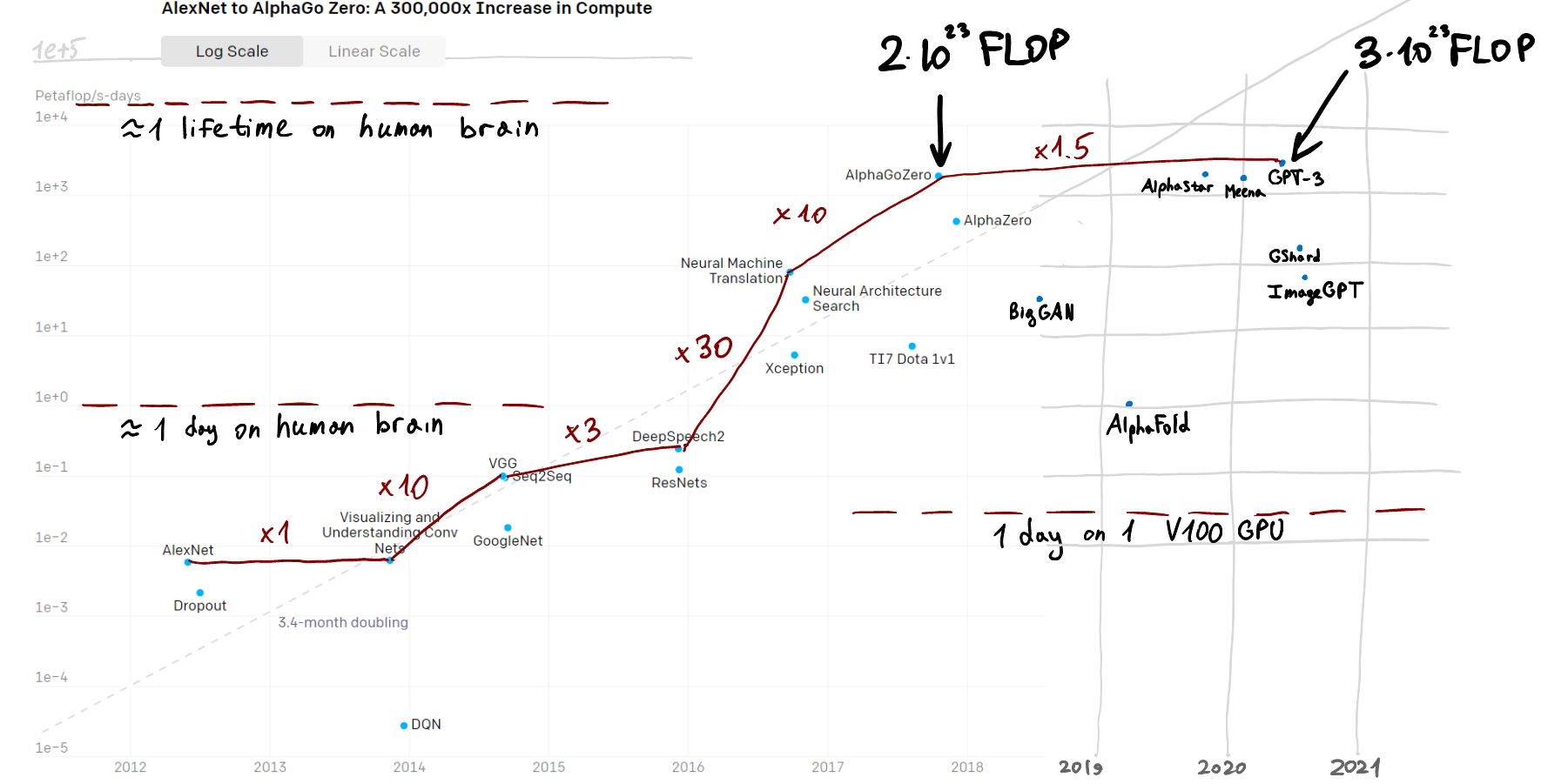
(open in a new tab to view at higher resolution)
In May 2018 (almost 3 years ago) OpenAI published their "AI and Compute" blogpost where they highlighted the trend of increasing compute spending on training the largest AI models and speculated that the trend might continue into the future. This note is aimed to show that the trend has ended right around the moment of OpenAI publishing their post and doesn't hold up anymore.
On the above image, I superimposed the scatter plot from OpenAI blogpost and my estimates of compute required for some recent large and ambitious ML experiments. To the best of my knowledge (and I have tried to check for this), there haven't been any experiments that required more compute than those shown on the plot.
The main thing shown here is that less than one doubling of computational resources for the largest training occured in the 3-year period between 2018 and 2021, compared to around 10 doublings in the 3-year period between 2015 and 2018. This seems to correspond to a severe slowdown of computational scaling.
To stay on the trend line, we currently would need an experiment requiring roughly around 100 times more compute than GPT-3. Considering that GPT-3 may have costed between $5M and $12M and accelerators haven't vastly improved since then, such an experiment would now likely cost $0.2B - $1.5B.